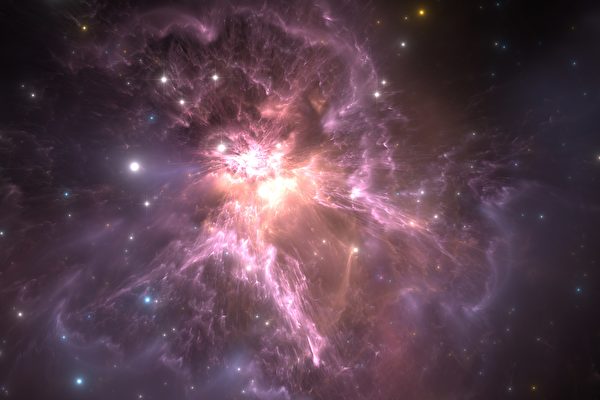Astronomers have discovered in their research that the interiors of neutron stars may contain a type of extremely dense material that cannot be found elsewhere in the universe.
This finding was announced in a news release by the National Aeronautics and Space Administration (NASA) on June 20. The center of the supernova remnant 3C 58 was found to house a rotating neutron star known as PSR J0205+6449. Scientists have been studying this neutron star and others similar to it to explore the properties of the highly dense material inside these celestial bodies.
In a new study, astronomers using data from NASA’s Chandra X-ray Observatory and the European Space Agency’s XMM-Newton satellite discovered that the interiors of neutron stars may contain a type of ultra-dense material not found elsewhere in the universe.
In the images released by NASA of 3C 58, low-energy X-rays are depicted in red, medium-energy X-rays in green, and high-energy X-ray bands in blue. These X-ray data have been combined with yellow optical images from the Digitized Sky Survey.
Data from the Chandra X-ray Observatory shows that the rapidly rotating central neutron star, also known as a pulsar, is surrounded by X-ray-emitting rings and jets extending several light-years. The optical data present stars within that region.
The research team analyzed previously released data on neutron stars to determine the equation of state, which refers to the basic characteristics of neutron stars, including the pressure and temperature of different parts inside.
Researchers examined some neutron stars located in supernova remnants, including 3C 58. They found that 3C 58 and two other neutron stars studied were significantly cooler than others in the research.
Researchers believe that part of the reason for the rapid cooling is that these neutron stars have larger masses compared to most other neutron stars. Due to the larger mass, neutron stars contain more particles, which could trigger special processes leading to faster cooling.
Near the center of these neutron stars’ interiors, there may be a process of radiative decay occurring, where neutrinos (low-mass particles that easily pass through matter) carry away most of the energy and heat, causing the rapid cooling process.
Another possibility is that researchers have discovered some strange substances at the centers of these neutron stars with faster cooling rates.
The images of 3C 58 released by NASA show X-rays and visible light. At the center of the supernova remnant is a rapidly rotating neutron star (pulsar), appearing as a bright white object with a slightly elongated shape.
Blue and purple circular materials and swirls extend outward from the neutron star in multiple directions, resembling the shape of an octopus and its tentacles.
Surrounding the octopus-like structure is a cluster of red material clouds, wider in the horizontal direction than in the vertical. A purple ribbon extends to the left edge of the red cloud, curling upward at its end. Another purple ribbon extends to the right edge of the red cloud. Various shapes and sizes of stars adorn the entire image.

